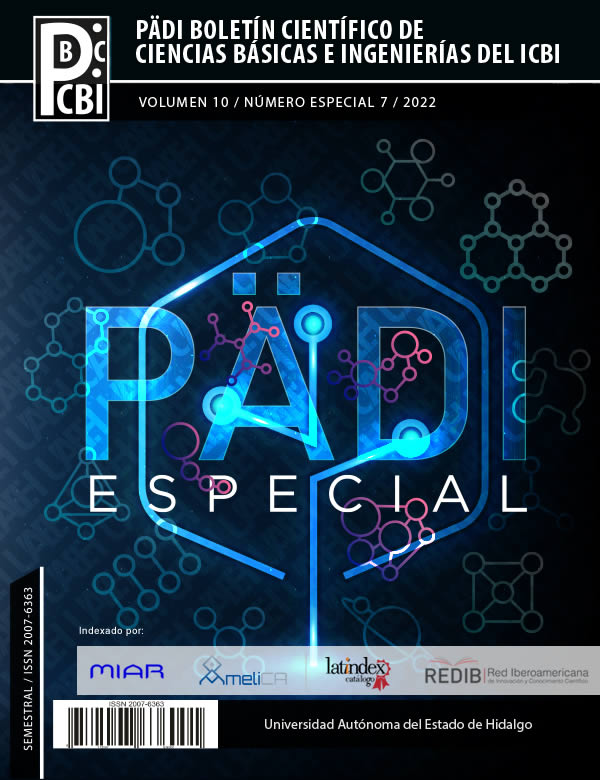Ceramic SiO2/PDMS as a remover of oily substances in aquifers
Abstract
Hybrid ceramic from TEOS and polydimethylsiloxane (PDMS) is presented as oil remove systems, which was obtained by sol-gel process using HCl as catalysts and PDMS concentration between 10- 40%w. The sol-TEOS/PDMS solution was impregnated in a porous system (sponge) to modify its hydrophilic character to hydrophobic that can be used as an oil removal system. The modification of the sponge was evaluated by infrared spectroscopy observing the vibration modes at 1100cm-1 for the siloxane bond (Si-O-Si) and at 1200 cm-1 (Si-C). On the other hand, the hydrophobic character was assessed with the contact angle (q), observing values between 110-130º. Physical sponge surface changes due to ceramic deposited, was observed by optical microscopy and finally the effect of the amount of PDMS on the oil removal capacity was determined
Downloads
References
Ahmad, D., van den Boogaert, I., Miller, J., Presswell, R., & Jouhara, H. (2018). Hydrophilic and hydrophobic materials and their applications. Energy Sources, Part A: Recovery, Utilization and Environmental Effects, 40(22), 2686–2725. https://doi.org/10.1080/15567036.2018.1511642
Kronberg, B. (2016). The hydrophobic effect. Current Opinion in Colloid and Interface Science, 22, 14–22. https://doi.org/10.1016/j.cocis.2016.02.001
Sriram, S., Singh, R. K., & Kumar, A. (2019). Oil-water separation through an ultrahydrophobic filter paper developed by sol-gel dip-coating technique. Materials Today: Proceedings, 26, 2495–2501. https://doi.org/10.1016/j.matpr.2020.02.531
Stuart, B. (2004). INFRARED SPECTROSCOPY : FUNDAMENTALS AND APPLICATIONS (Vol. 8).
Wang, X. (2020). Preparation , synthesis and application of Sol-gel method University Tutor : Pr . Olivia GIANI Internship Tutor : Mme. October.
Yang, H., Ye, S., Wang, Y., Zhou, J., Chen, J., Zeng, Q., & Liang, T. (2019). Natural flexible superhydrophobic film derived from cajeput bark for oil/water separation. Materials Letters, 238, 198–201. https://doi.org/10.1016/j.matlet.2018.12.007
Zakuwan, S. Z., Ahmad, I., Tahrim, N. A., & Mohamed, F. (2021). Functional hydrophilic membrane for oil–water separation based on modified bio-based chitosan–gelatin. Polymers, 13(7), 1–20. https://doi.org/10.3390/polym13071176
Zhai, G., Qi, L., He, W., Dai, J., Xu, Y., Zheng, Y., Huang, J., & Sun, D. (2021). Durable super-hydrophobic PDMS@SiO2@WS2 sponge for efficient oil/water separation in complex marine environment. Environmental Pollution, 269(xxxx), 116118. https://doi.org/10.1016/j.envpol.2020.116118
Zhao, X. Q., Wahid, F., Cui, J. X., Wang, Y. Y., & Zhong, C. (2021). Cellulose-based special wetting materials for oil/water separation: A review. International Journal of Biological Macromolecules, 185(29), 890–906. https://doi.org/10.1016/j.ijbiomac.2021.06.16













